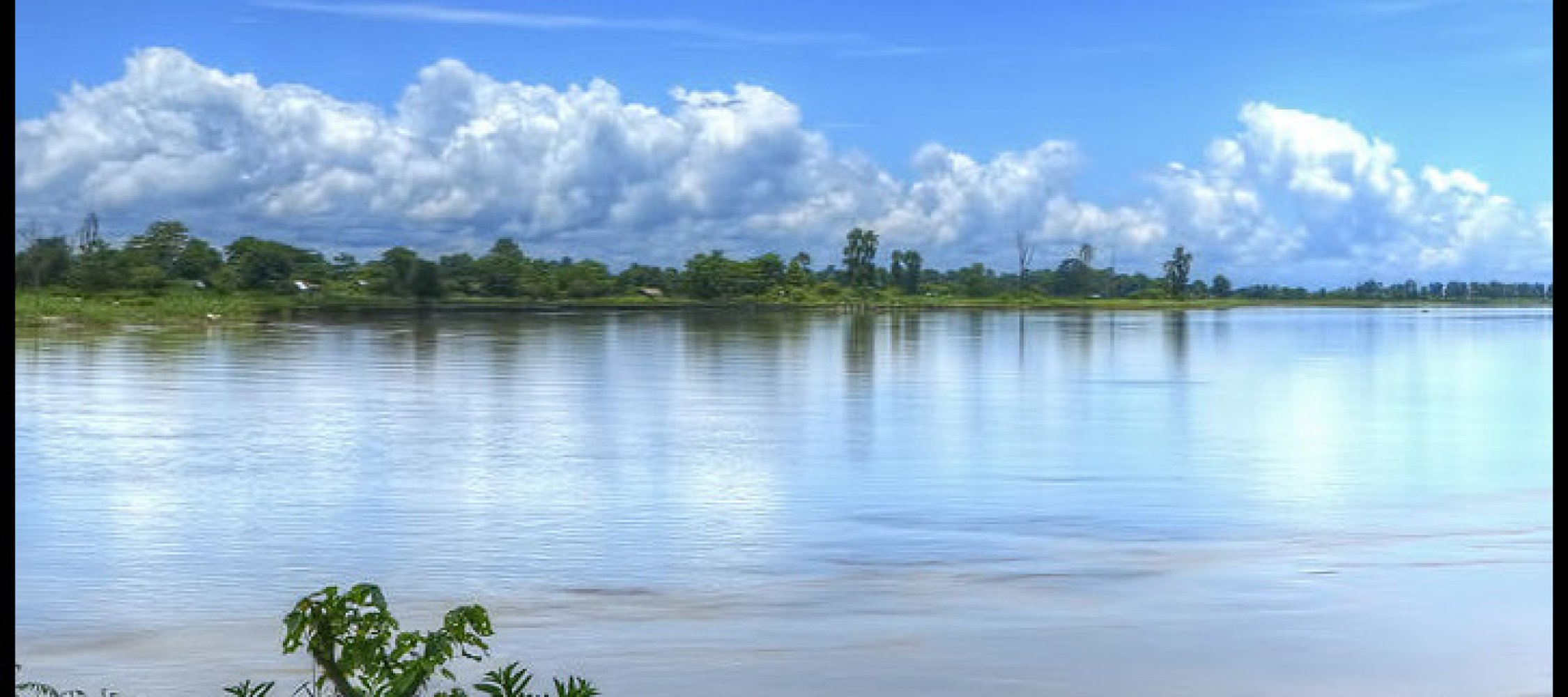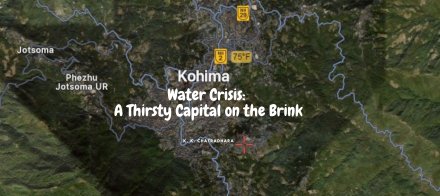 |
Rivers, if looked from a wider window, aren’t sole flowing masses of water. Nor are rivers sole geological products and a mundane player in the water cycle. If looked from a sociological, historical, and economic lenses; rivers constitute a realm of attributes, definitions, assumptions and roles that transcends beyond the conventional definition of a river. Geographically and geologically, rivers are bodies of water which are in flow - a journey of water mass from its origin in a higher elevation, its subsequent descent into the plains and finally its discharge in a larger water body like a large river, a sea, an ocean et cetera. Apart from the associated role that a river plays in its course – depositing alluvial silts, recharging the water level in a basin, an active player in the erosion process, a habitat to aquatic biotic and abiotic constituents; a river is also an active agent in the consolidation and evolutionary process of human civilization. It’s a well-known and well established fact that early civilizations proliferated in and around river valleys – between the Tigris and the Euphrates rose the Mesopotamian civilization, beside the Indus-river system rose the Indus Valley Civilization.
A contemporary look will make it clear that rivers are no more a natural constituent of human habitation. Its role has metamorphosized over time. With the advent of modernity, science and economics, a complex interconnected vortex has developed around rivers across the globe. With the creation, advent and rise of nation-states and borders, the notion of geographical continuity has been compromised in recent centuries. Bilateral river pacts and agreements have occupied a major stake in the diplomatic capital of a nation. Politics related to big dams have surfaced a huge debate between the global power/corporate elites and the immediate stakeholders and has also resulted in diplomatic and international skirmishes amongst many nations. In a micro-scale, rivers have been transformed from its traditional meaning of having a natural and religious role to a more complex role of being a ground for a range of human activities that include riverine transportation, aquatic economy, demographic settlement and displacement, erosion and land issues and also, its role as a site for sewage and waste disposal. An anthropological understanding a river can be quite diverse and intersectional for it encompasses history and evolution of the river system and human habitation around it, but in contemporary times, one cannot incur the cost to ignore the political and economic role that a river plays in the overall niche of a population’s existence.
Assam is endowed with a terrain that is mostly plain but also with a considerable amount of rugged range of hills, hillocks and elevated remains of foothill Himalayas. Being surrounded by the east-west running Himalayan range on its north, north-east; Dima Hasao, Mikir Hills and Naga Hills on its eastern flank and the Meghalayan plateau of Khasi, Jaintia and Garo Hills on its south; Assam is divided into two dominant river systems – the Brahmaputra and the Barak valley. Though these are the dominant river systems of the region, the entire scape of Assam is traversed and criss-crossed by hundreds of downflowing rivers, rivulets, tributaries, streams and beels – ox bow lakes which are also an integral part of a river system. The Disang river is a tributary of Brahmaputra and its river basin and carriage system cover a major portion of the south bank portion of Brahmaputra plains of Upper Assam, the Tirap district of Arunachal Pradesh and the Mon district of Nagaland. To analyse the theme of the essay, a close inspection of Disang river valley and its associated socio-demographic attributes is, thus, deemed necessary.
The Disang Valley: The Disang river originates in the Patkai Bam peak in the Patkai Hill ranges at the elevation of 2,200-2,600 meters in the Tirap district of Arunachal Pradesh. (Sarma, 1993) The river is referred to as Tisa at its source, Dilli or Dillih in the middle part and Disang or Desang in its lowest part. The river Disang has its two distinct sections on the basis of topography and river gradient i.e., the hilly portion and the plain portion.
The Disang river from its source covers a hilly tract in the Patkai hill ranges of Arunachal Pradesh and a plain part in Assam. The length of the hilly portion is 65.50 km. The course of Disang from its point of origin to its discharge in Brahmaputra is around 253km and the river’s alignment has undergone major changes at three cardinal points – from its source near Silan to Namrup, from Namrup to Nangalamara, and from Nangalmara to Disangmukh (mouth). (ibid.) According to the National Survey of Rivers Report 1997, the Disang valley was enumerated to have a width of around 100meters and a highest depth of around 12 meters. Due to its meandering nature and the shifting of its course, several beels, i,e ox-bow lakes have taken shape out of which Bebehi, Goroimari, Dhemail, Mora Disang are notable ones. Of Disang’s notable tributaries are the Timon, Taukak, Sofrai, Diroi and Demow. The basin covers an area of 3845.98 kms out of which an area of 2009.01 km is in the plains and hills of Dibrugarh and Sivasagar districts of Assam. The remaining area of 1836.97 Km lies in the hills of Tirap and Mon districts of Arunachal Pradesh and Nagaland respectively.
Socio-Economic Set-up of Disang Valley: The physical landscape and the socio-economic activities of humans have evolved a composite socio cultural behaviour of the Disang valley. Diverse micro-regional and ethnic entities populate the banks and the river basin of Disang. The Misings, an ethnic tribe of Tibeto-Burmese origin, populates a considerable swathe of the valley along with the Baganiya population, i.e the tea garden tribes. The economic development of the Disang river basin is agro-based. The rural diaspora of Dibrugarh and Sivsagar districts are engaged in subsistence paddy cultivation. More than 80 percent of population of the Disang valley are engaged directly or indirectly in agriculture. The tribal people of the basin area do not exhibit any noticeable complexity in land uses. They prefer to settle mostly in the forest and riverine environments. Fish available in the rivers and wetland render a good means of economy in the basin, especially for fisher communities of the region.
To treat the pollution issue in Disang river, an Action Plan was undertaken under the aegis of National Green Tribunal and measures have been meted out to address the issue. A Priority V Report produced by River Rejuvenation Committee, a Government of Assam initiative on Disang river points that the polluted stretch of Disang river is in two parts - a) the Gudamghat stretch is around 2.9km with an area of 1.3 sq. km; and b) the Kecharuguri stretch from Kecharuguri No.1 to Kecharuguri No.3 at Sivasagar District. (RCC Report, 2018) The Committee aimed for effective abatement of pollution, rejuvenation, protection and management of the identified polluted stretches, for bringing the polluted river stretches to be fit at least for bathing purposes within six months.
A robust time-bound action plan is necessary to deal with the issue of pollution in the Disang valley. Of the most important steps, one must limit and control the discharge of industrial waste into the river body which has include the inventorisation of industries and a check on the effluent quality. Treatment of effluents and compliance with standards and mode of disposal of effluents along with a strong regulatory check is essential for all industries and factories that are based in the river system. Secondly, a large chunk of pollution results from untreated domestic sewage. Thus, there must be an identification of towns in the catchment of the river and a town-wise estimation of quantity of sewage generated and installing sewerage system and sewage treatment plants at a frequent interval. A control on open defecation should also be encouraged. Thirdly, periodic assessment of groundwater resources and regulation of groundwater extraction by industries particularly in over exploited and critical zones/blocks is extremely crucial for a cleaner river body. Groundwater re-charging /rain water harvesting are natural modes of replenishing the water balance in our ecosystem. Thus, over exploitation of groundwater should also be checked and regulated. Fourthly, floods are an annual ritual that occurs in the Brahmaputra basin, especially in the upper swathes. The Disang river has overflown several times, which has displaced a lot of population which inhabit the adjacent swathes of the river. The Mising tribe have innovated means and modes to adapt to flood situations – the architectural style of the Sang Ghors are a testament of their adaptability to frequent floods. Thus, one must undertake certain measures in a flood-prone area to keep unnecessary pollution in check. Management of municipal, plastic, hazardous, bio-medical and electronic waste must become of optimum importance during times of flood. Embankments and green belts can limit the human and economic cost of flood to a certain degree. Lastly, but not the least, community participation is extremely necessary in executing such measures. The town population in accordance with the ethnic and tribal population must develop measures to undertake pollution-prevention methods in a collaborated way. Bureaucratic unwillingness and corruption can be hurdles in the course, but a vigilant stakeholder population can surpass such difficulties with community deliberations and decisions.
Thus, it can be summarised that controlling pollution in Disang river is an issue of imminent importance but at the same time, one must take up the challenges that needs to be face-offed in the process. Gunnel Cederlof, a historian who has worked on river basins of North East India, opines that the north-east is a region where the river courses shift from season to season and cultivated fields turn into lakes during the monsoons and with these constant changes, livelihood strategies of the people living in the river ecosystem too, changes. Therefore, this entire process of pollution control and conservation of Disang requires a well drawn roadmap, an efficient executive machinery, collaboration of stakeholder communities and a morale for a cleaner ecosystem.
References:
Geolocation is 27.084829425740786, 94.94702404916457


